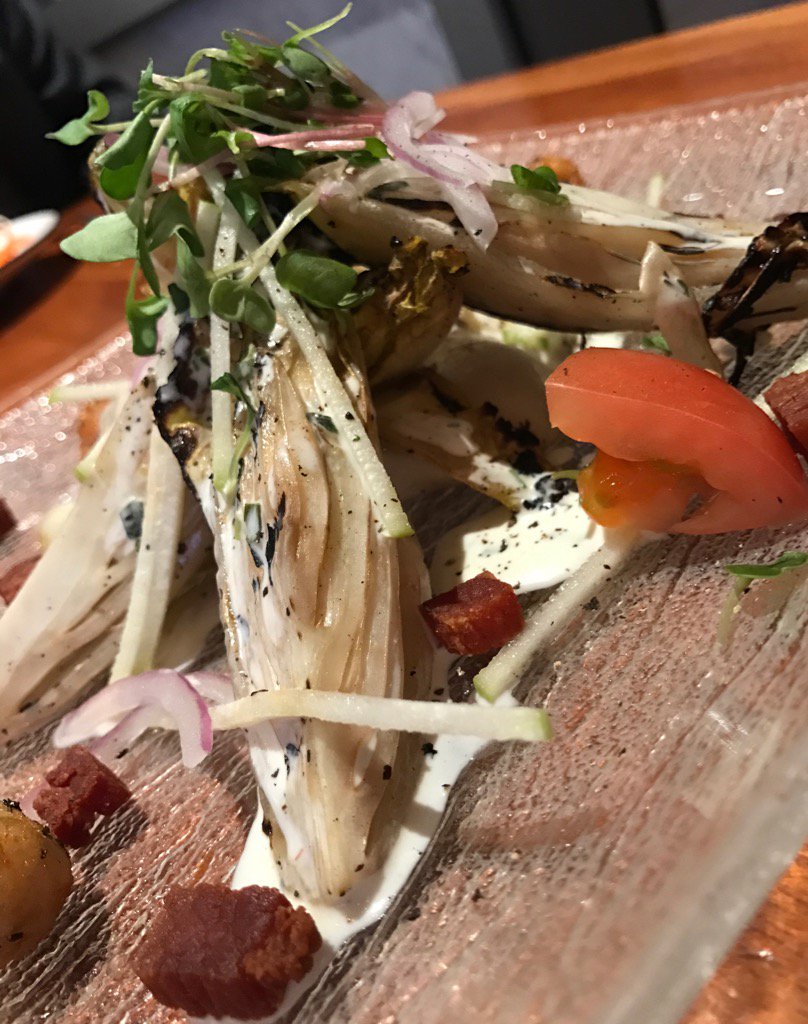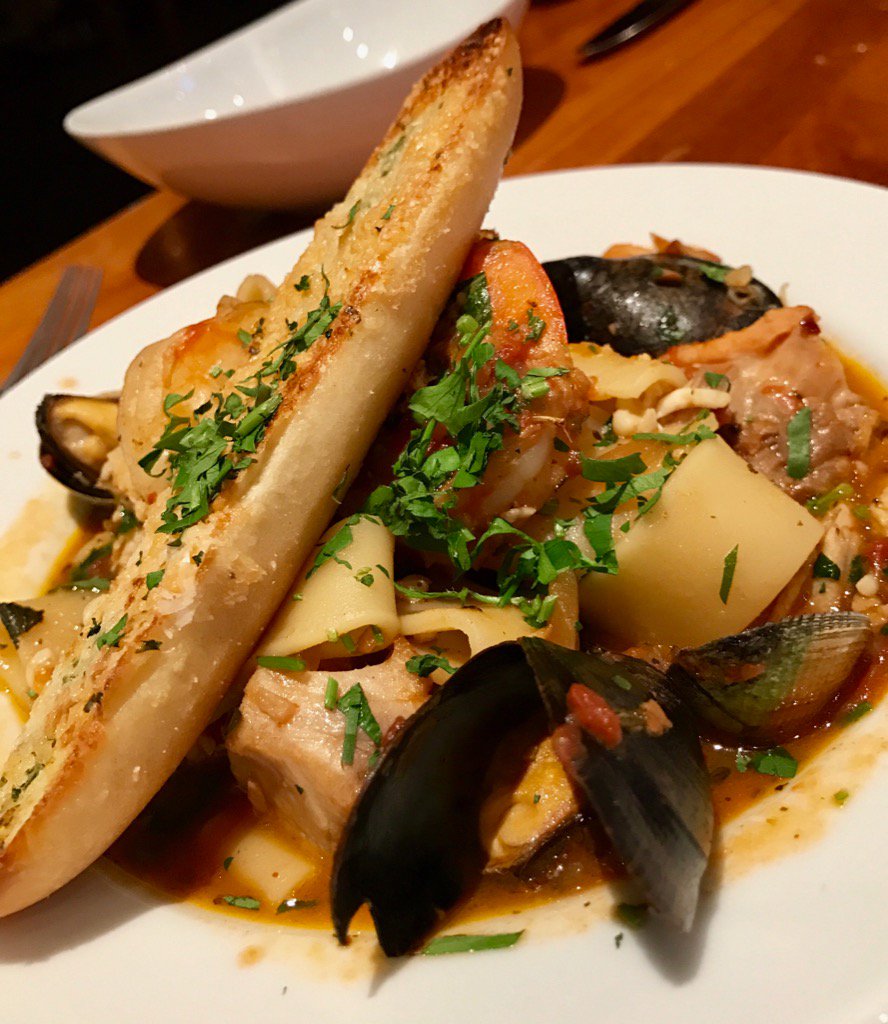“You’re not being rude enough,” was the first thing I said to our waiter (Tony) as he was cheerfully guiding us through the menu and drink order.
He just smiled and shrugged, “That’s not the way we do things around here,” and then kept on being more solicitous than a billboard lawyer at a fender-bender.

Which is another way of warning you that when it comes to atmosphere and service, Peter Luger Las Vegas is as far from the actual Peter Luger (the one located at the foot of the Williamsburg Bridge in actual New York), as Caesars Palace is from actual Rome. Except for the food — which hits most of the benchmarks established in the glory years when Luger was widely considered the best steakhouse in the country.
Back then, Luger was famous for several things: cash only (unless you had a PL credit card), rude waiters, and having the best beef in the city. These were the days before any Podunk purveyor of prime could access superior beef from around the globe — a time when New York City got all the best steers, and few in America even knew what dry-aging was.
Trading on that reputation, the family (yes, it’s still family-owned) has finally started to expand, opening first in Tokyo in 2021, and a week ago in our humble burg.
Before we get to the food, back to that rudeness thing. From our experience, it has always been an apocryphal complaint — the sort of gripe jaded New Yorkers hurl at any place where “Do you know who I am?” has no currency.
For those who wish to believe such malarkey, here is a pic of me in Brooklyn, twenty-three years ago, being totally abused by a waiter:
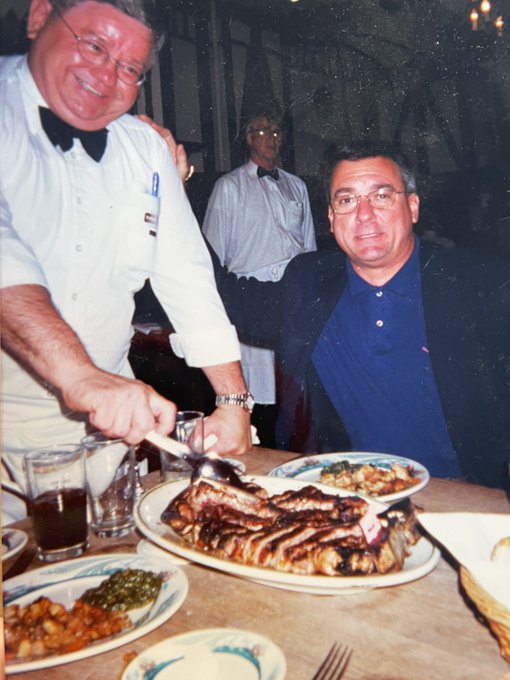
On both of my visits in the 90s, I went early without a reservation (the second time with three teenagers in tow), and humbly asked if they could squeeze us in. And they did, remarkably quickly, with a smile, in one of the stark, Teutonic rooms — more German beer hall than American steakhouse — at bleached wood tables saturated with a century of beef fat, smoke and history.
Service was cheerfully brusque, the kind you get from sassy diner waitresses when they tell you, “You’re not having that; you’re getting the _____ and he’ll have the ____, and anymore questions?” Causing everyone at the table to win by conceding defeat to those in the know.
The porterhouse steaks we ate then were life-changing: a study in mineral-richness, shot through with tangy, gamey beefiness, singular in their haunting intensity. For perspective, the only steaks I thought were in the same league at the time were from the original Palm, Gallagher’s, and Keen’s in New York, and Gibson’s in Chicago, but Luger was in a league of its own. Dry-aged beef was a rarity then, today in New York it’s as common as Yellow Cabs.
Then and now, Luger stubbornly avoids anything fancy. The dry-aging still permeates the beef, causing textures to tenderize, and flavors to intensify and “double-back on themselves” (Pete Wells) — the sizzling plate spitting butter and melted tallow so hot you can finish cooking your slice on the sloped sides of the platter if you want it a percentage more done.
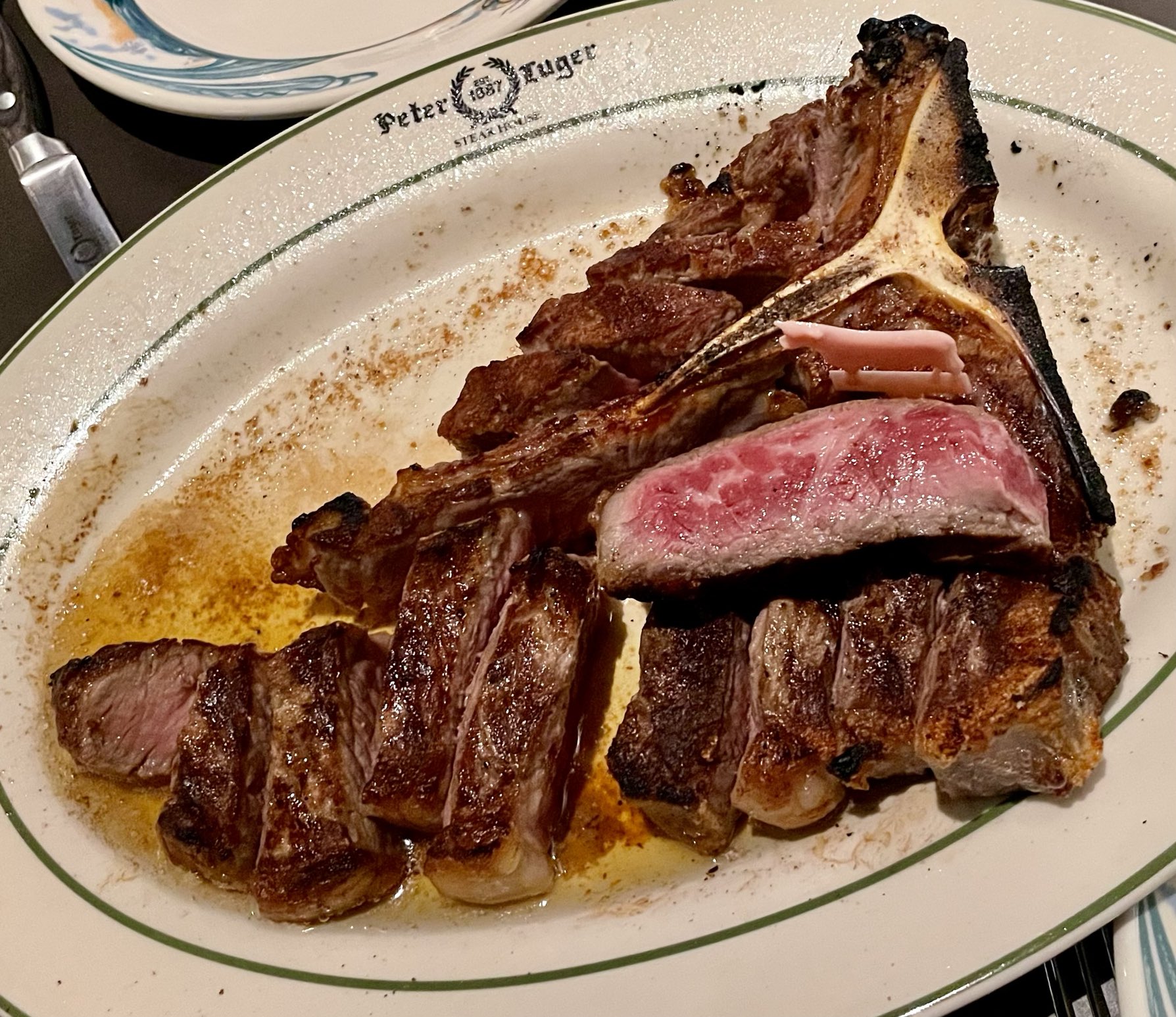
Is the beef as good today as the steaks I remember? Tough to say, as I consider those Luger steaks in the 90s as the apotheosis of the porterhouse which has rarely been equaled — even after tucking into hundreds of slabs of dry-aged steer from Soho to Tokyo. But the buttery mouthfeel and nutty, umami undertones I tasted at the fourth Peter Luger will no doubt send some fetishistic foodies into fits of tantric foodgasms, placing this beef at or near the top of any in town.
Some menu items, struck me as better crafted here than there: an incredible crab cake, pristine cold seafood, crispy/creamy German potatoes, along with some non-food improvements: well-spaced tables, better stemware, large circular bar brought front and center into the restaurant (the former Rao’s in Caesars Palace) — all calculated to produce both as sense of masculine comfort and a “wow” factor which the original lacks, all while catering to the demands of a three-hundred seat Vegas steakhouse slinging 2,000 lbs. of steaks a day.
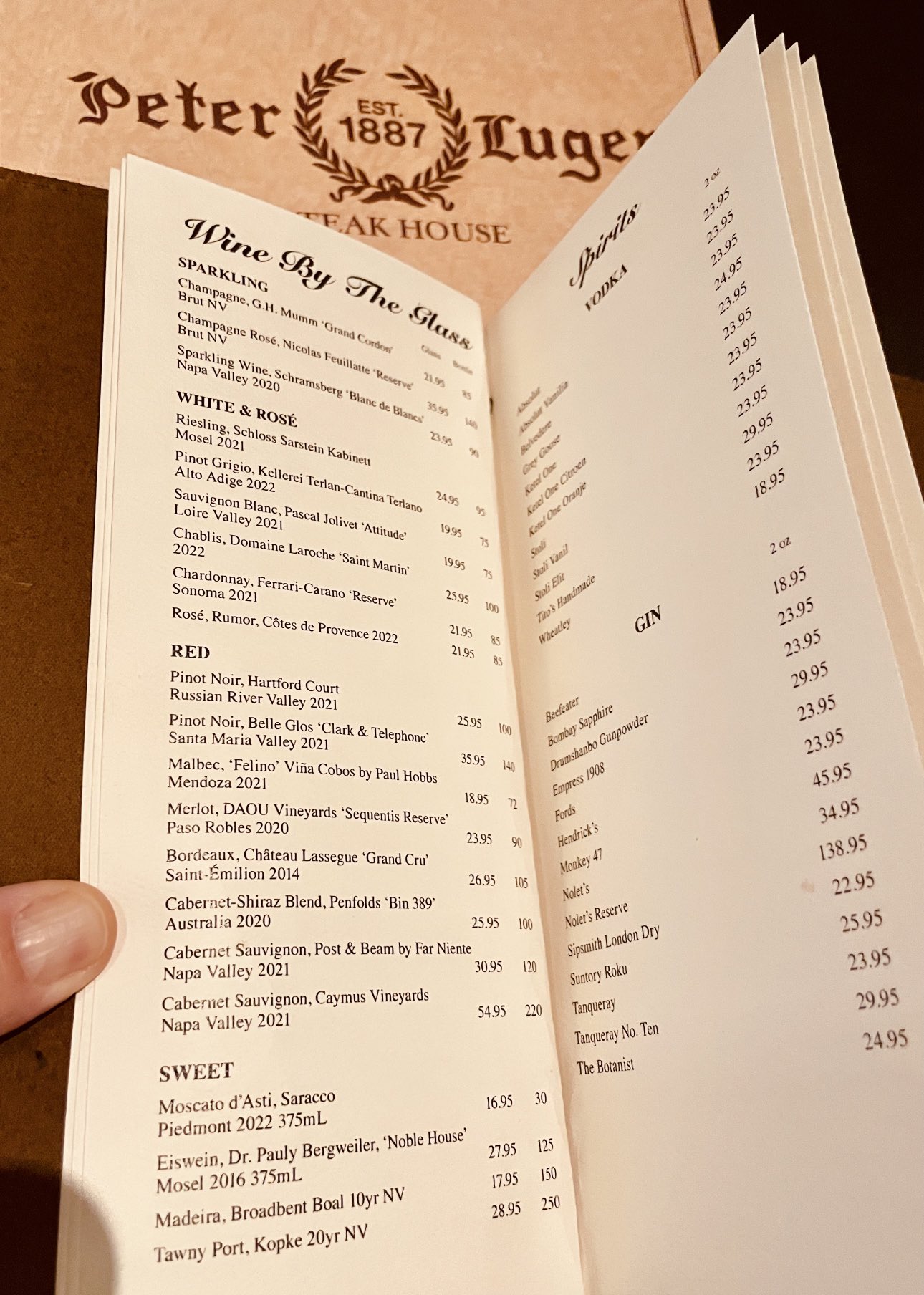
Upon taking one of those seats, they give you a fancy cocktail menu, and a wine list full of interesting bottles. The one in Brooklyn has always been infamous for being barely above the “red, white, or pink?” level of choices, unless your tastes run to overpriced Cali cabs. (Regulars — the ones with that coveted private credit card — usually bring their own.)
You will then be given a menu with a large letterbox in the center outlining steak for two, three or four, priced from $148.95 to $285.95. Those steaks are all porterhouses — for the uninitiated, a thick, t-bone containing part of both the sirloin and filet. All are broiled and brought to the table sliced amidst the hiss of fat coming off white-hot plates. They are what you order at Peter Luger in the same way you go to Mott 32 for the Peking duck. Everything else is window dressing.
This is 60-day, dry-aged beef, cured on-premises in a 4,000 square foot meat locker below the restaurant, so it ain’t cheap, but $150 for a “steak for two” will easily feed four, unless you have an NFL tackle among you. If you insist, lamb, chicken, and Dover sole are there for the pikers, and the bar burger (if it’s anything like the original we had in Brooklyn) will be a showstopper.

The rest of the menu is unapologetically old school. I happen to be a fan of the Luger steak sauce, even though Pete Wells (in a New York Times take-down in 2019) described it as ketchup and horseradish fortified with corn syrup. Unlike his though, our shrimp were not the consistency of “cold latex,” but pristine and perfect.
And the signature tomato and onion salad may be a bit bizarre, but it’s as much a part of the Luger legacy as sizzling fat:

Wells insults the dish by stating it “tastes like 1979” but that’s exactly the point: this was your grandma’s idea of sweet-sour salad in 1966. It is outdated, un-seasonal and about as voguish as a dickey… and all the more glorious for it.
Desserts are no-nonsense classics: hot fudge sundae, properly-crusted New York cheesecake, chocolate pie – all of them served mit schlag (“with unsweetened whipped cream”) reminding us of this place’s German roots and sending everyone home with a satisfied grin.
The staff is an all-star lineup of local restaurant pros who have put in their time from the biggest operations to the smallest sandwich shops. Jacob “Jake” Leslie is now Director of Food and Beverage at Caesars. We’ve seen him come through the ranks from The Goodwich, to Libertine Social to now running the whole shebang at a gigantic hotel. Executive Chef Eric L’Huillier has gone from Pinot Brasserie (Joachim Splichal’s once-underrated bistro in the Venetian) to being top toque at Wally’s, to now heading a kitchen with ten broilers expected to feed hundreds of customers an hour.

Front of the house is anchored by David Oseas (pictured above with L’Huillier – who was previously at Rosa Ristorante in Henderson), along with one of our favorite wine guys: Beverage Director Paul Argier. Argier is responsible for the vastly-improved, multi-national wine list, which isn’t cheap, but still possible to mine for relative bargains — once you understand that $125 is the new $75 when it comes to Strip wine lists.
Walking into PL and seeing them all running the place made it feel like old home week, rather than another soulless Strip branding exercise. It is a huge restaurant but also a welcoming one. How it stacks up against our other top-shelf purveyors of prime probably depends upon your expectations when approaching a restaurant with such a storied history.
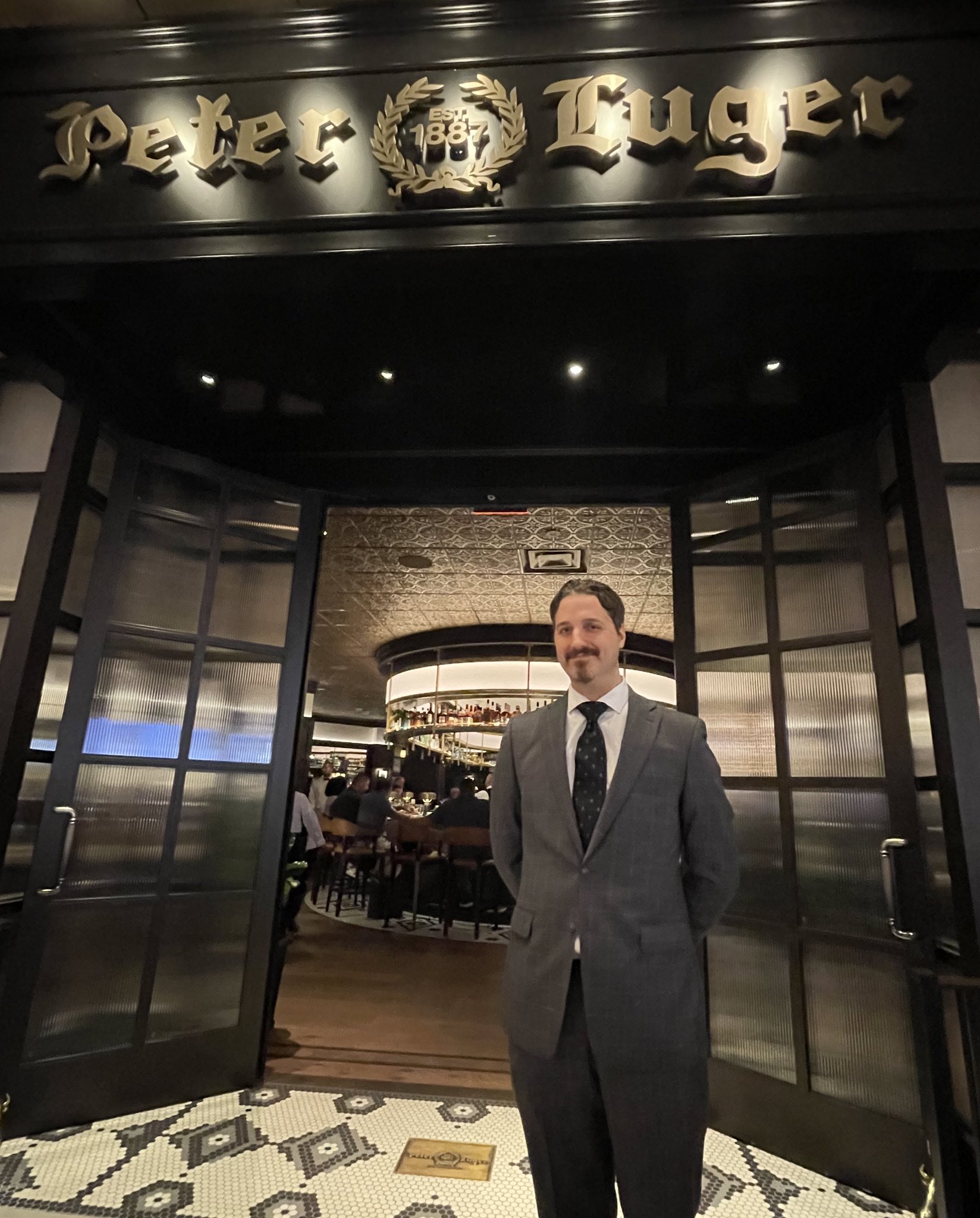
Peter Luger started in 1887 as a cafe and billiard parlor. It had hit hard times when the Forman family resuscitated it in 1950, turning it into a cathedral of beef (and the template for the modern American steakhouse) in the latter half of the last century.
Back then, the Formans were known for being the toughest customers in town when it came to sourcing prime grade beef. But in the twenty-first century, these kinds of top-shelf, tender, well-marbled cuts — which used to be the exclusive province of a few select steakhouses — are now sold world-wide. I used to consider it a treat to fly to Chicago or New York to dive into a Brobdingnagian, dry-aged porterhouse. Now there are a dozen steakhouses within 20 minutes of my house where I can indulge my Flinstonean fantasies.
The final question thus becomes: Is the meal worth the tariff?
Lezbee honest here: You don’t go to Peter Luger for innovation or chef’s creations. You are not here for the appetizers, or the side dishes, or seasonal eating; you here for the main event: the meat and the bragging rights to having taken down one of the world’s greatest steaks. One hundred and thirty-five years on, from the point of view of a palate who has eaten them all, this one is still one of the best ones, and more than worth boasting about.
And, as always, it will be served with a smile.
Our meal for two came to $341 (including one cocktail, three glasses of wine, and a comped shellfish tower), and we left a $100 tip.
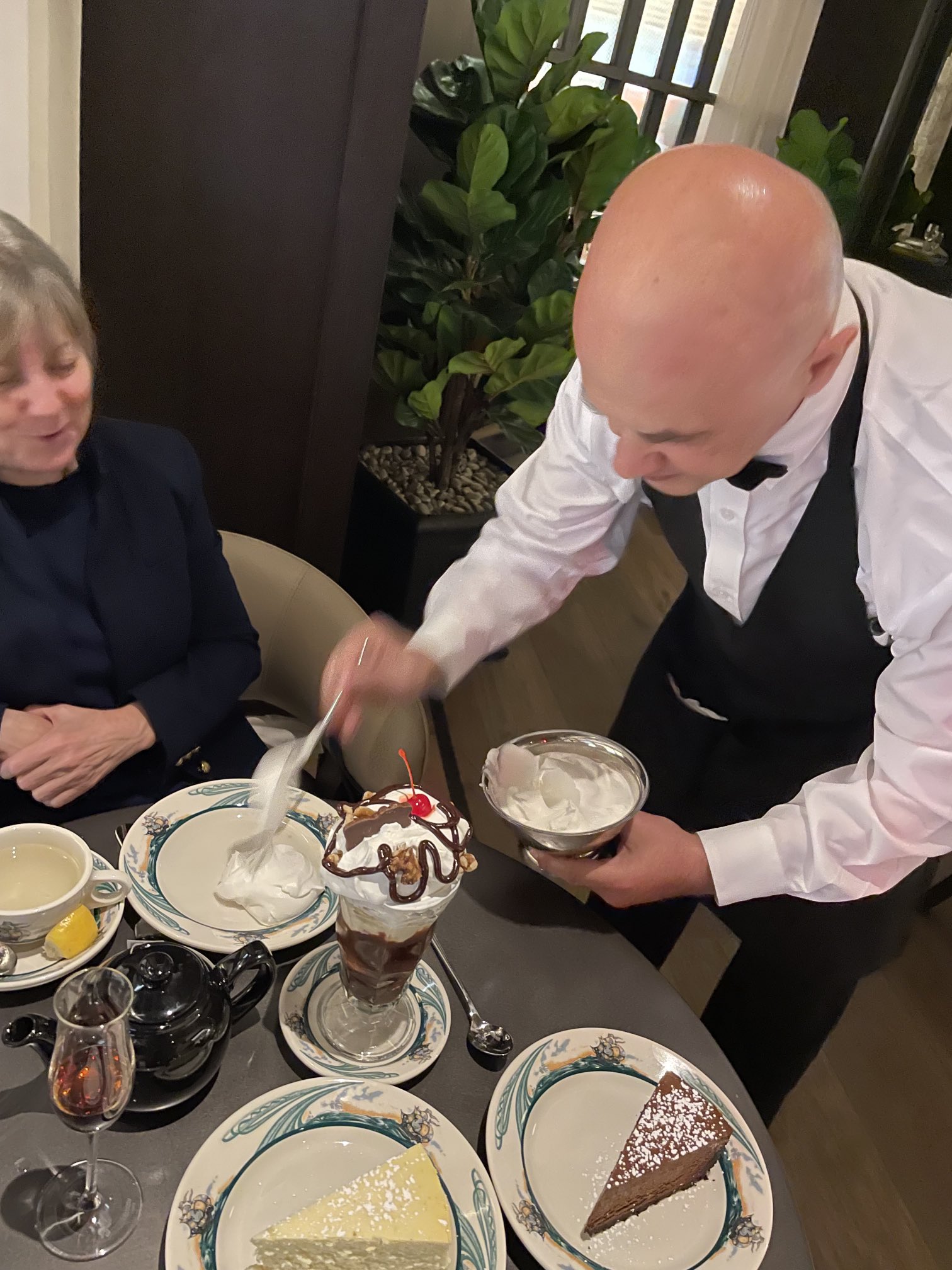
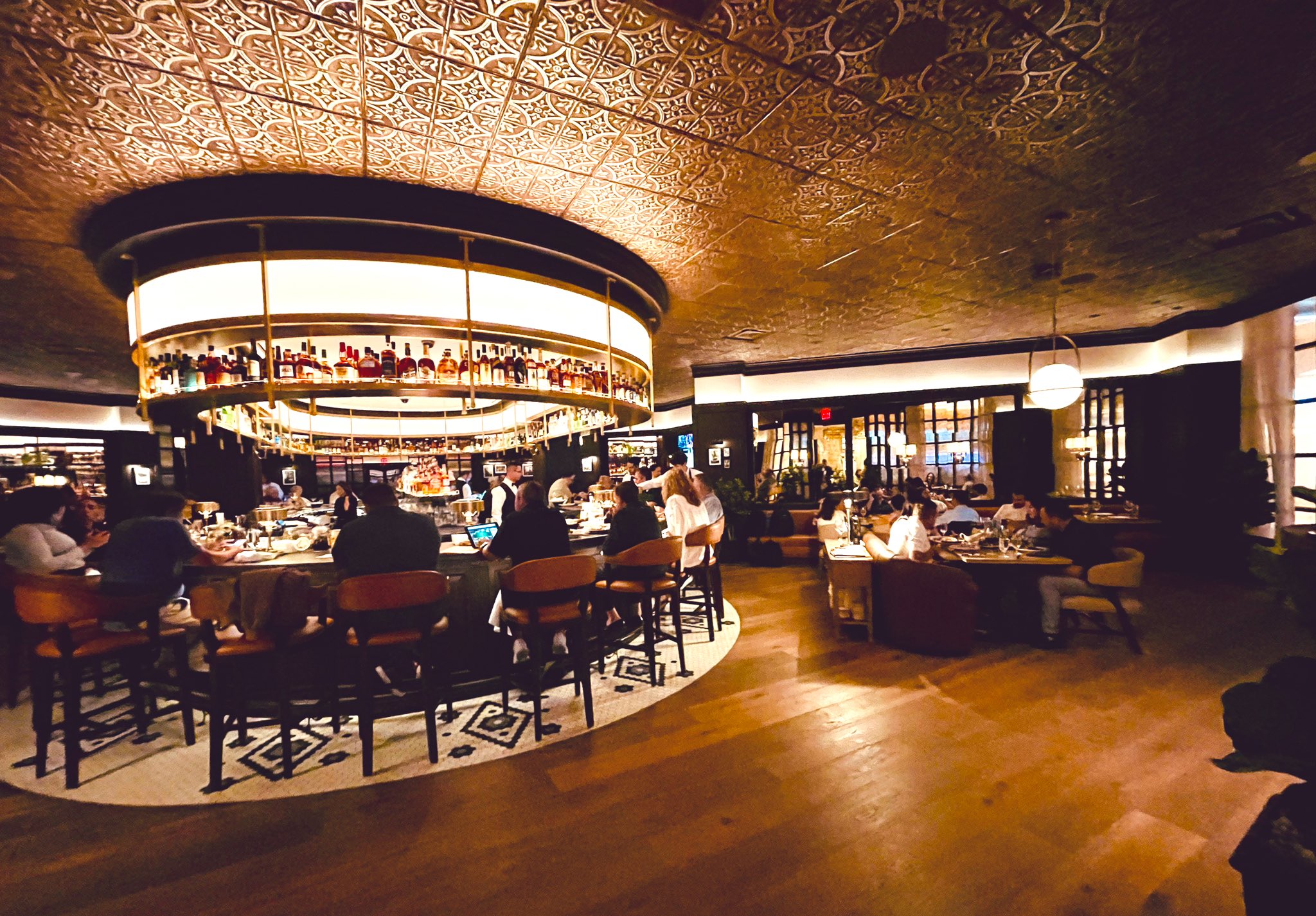
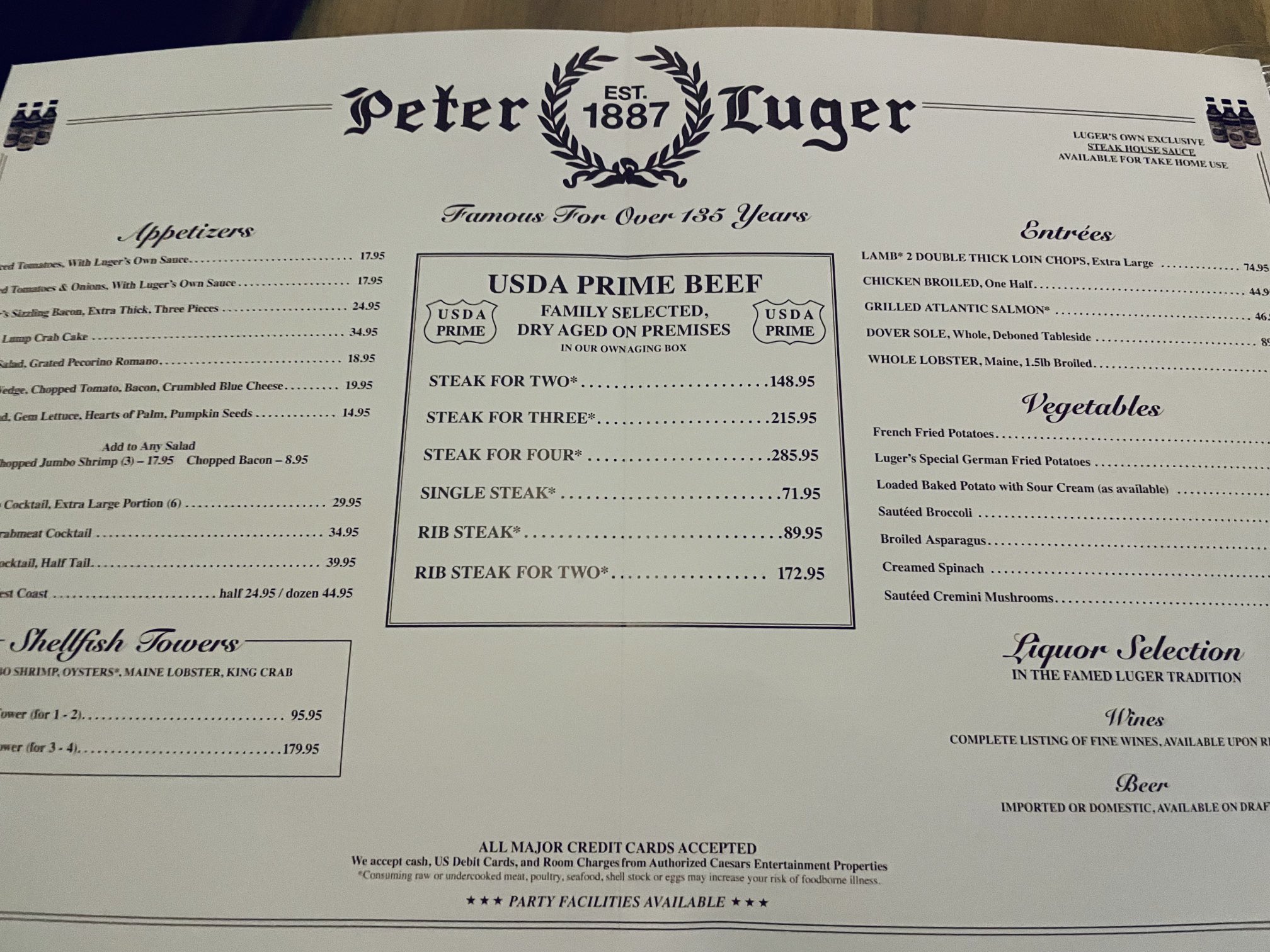
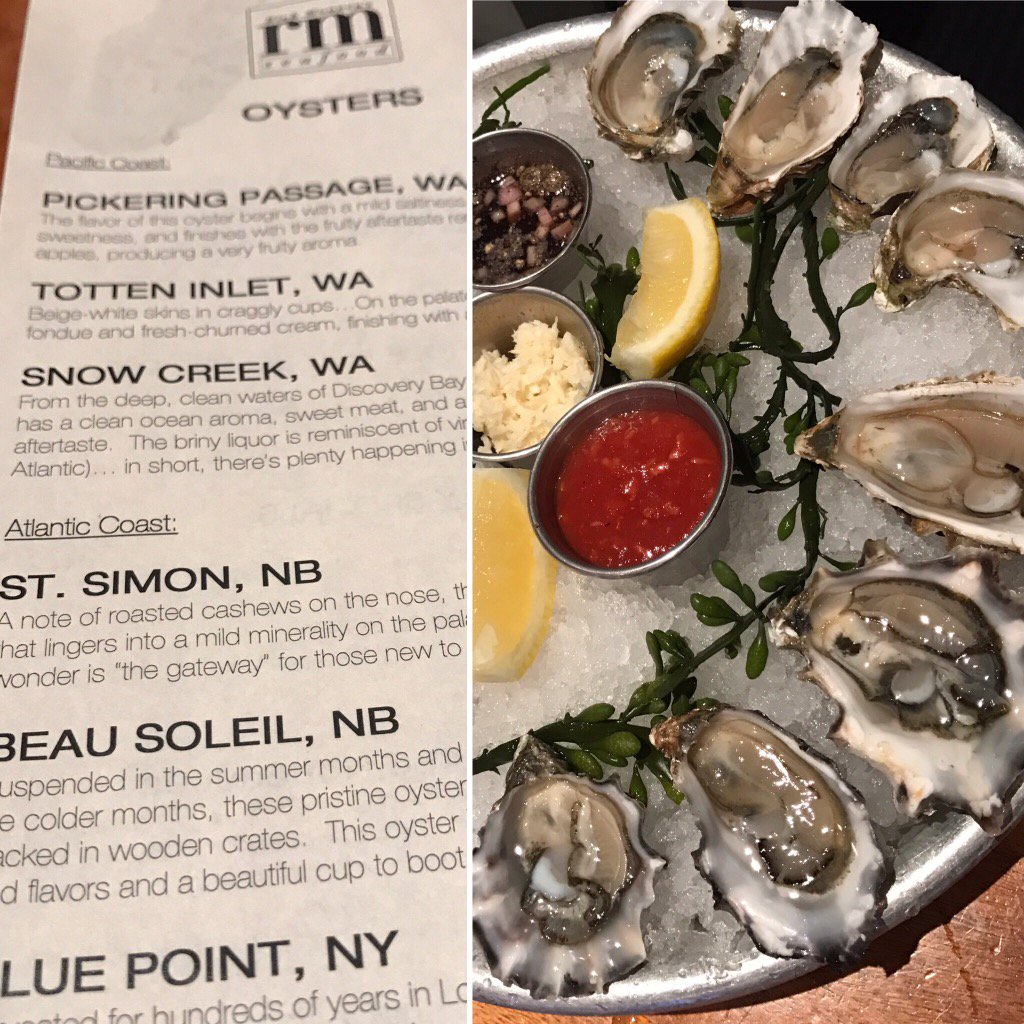 (These mollusks left us shell-shocked)
(These mollusks left us shell-shocked)